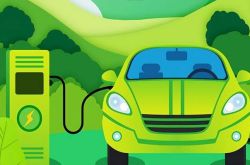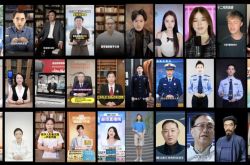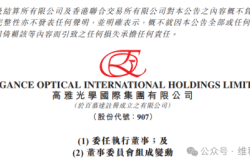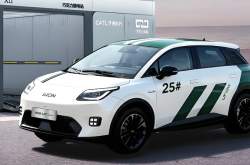New Energy Vehicle Companies Brace for 'Bloody Battle' in 2024: Stand Out or Fall Behind
![]() 12/31 2024
12/31 2024
![]() 538
538
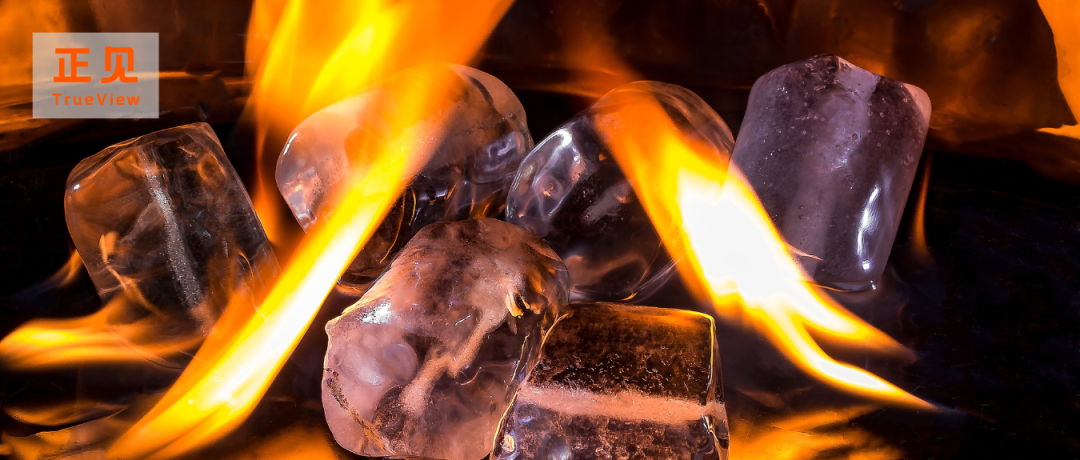
The intensifying market will not spare the weak. In 2024, the polarization in the new energy vehicle market deepened further, with some companies thriving while others disappeared amidst the accelerating reshuffling.
Content/Awen
Editor/Yong'e
Proofreader/Mangfu
As we approach the year's end, reflecting on the fierce competition between traditional and new players in the new energy vehicle market this year feels like reliving an epic saga of fire and ice.
This year brought remarkable achievements – China became the first country to produce 10 million new energy vehicles annually in 2024. Furthermore, new technologies emerged in rapid succession, including BYD's fifth-generation DM hybrid technology, Geely Auto's Thunder Power EM-i super hybrid system, and the official launch of NIO's flagship sedan ET9.
However, the market chill was also felt. Since December, two new energy vehicle brands have faced consecutive setbacks. First, Nezha Auto was exposed to layoffs and production halts, followed by Zeekr Auto's abrupt 'onsite disbandment,' with employees surrounding the company headquarters to demand unpaid wages, often trending on social media. Ironically, in mid-November, Zeekr had just unveiled the world's first AI smart supercar, the ROBO X, a concept car designed specifically for autonomous racing.
This year was also challenging for new energy vehicle startups. Earlier, companies like Aichi, WM Motor, and HiPhi went bankrupt one after another. For a time, new energy automakers seemed to be teetering on the edge of a cliff, casting a dark shadow over the market.
Xiao Peng Motors CEO He Xiaopeng once stated, '2024 marks the first year that China's new energy vehicle brands have entered a 'bloody' competition, the first year of elimination rounds.' This signifies that the automakers' race for breakout success has already begun, and staying at the 'gaming table' is much more difficult than anticipated.
How did traditional and new players in the new energy vehicle market perform in 2024? TrueView provides a detailed review for you.
Part 1
Milestone: Annual Production Exceeds 10 Million Units for the First Time
On the morning of November 14, China's annual production of new energy vehicles surpassed 10 million units for the first time, making China the first country in the world to achieve this milestone.
China's new energy vehicle production and sales have been included in the statistical system since 2013. That year, production was merely 18,000 units. By 2018, annual production reached the millions, exceeding 5 million units in 2022 and finally surpassing the 10 million mark this year.
According to incomplete data, among automakers that have released sales data for the first 11 months of 2024, BYD, Zero Run, and Xiaomi Motors have already achieved their annual sales targets.
BYD is poised to secure the sales champion title in advance. The latest data shows that by the end of November, BYD's cumulative sales in 2024 reached 3.74 million units, surpassing last year's total. Notably, sales exceeded 500,000 units in both October and November consecutively.
Lian Yubo, BYD's chief scientist, chief automotive engineer, and dean of the Automotive Engineering Research Institute, revealed in a media conference that BYD's cumulative sales in 2024 are expected to reach 4.25 million units. BYD has performed robustly in both domestic and international markets, with models like the Han EV, Dolphin EV, and Song Pro DM-i becoming popular choices among consumers.
Looking at Zero Run, by the end of November, it had achieved a cumulative annual sales volume of 250,000 units, leading the way in completing its annual sales target. Meanwhile, Zero Run's sales in November reached 40,000 units for the first time, a year-on-year increase of 117%, marking a double celebration.
However, the automaker that has garnered the most attention this year is undoubtedly Xiaomi Motors. In April, Lei Jun announced that Xiaomi's delivery target for the SU7 in 2024 was over 100,000 units. A month later, Lei Jun readjusted the delivery target: a guaranteed delivery of at least 100,000 units and a challenge to deliver 120,000 units within the year. On November 18, Lei Jun announced on Weibo that Xiaomi had surpassed its delivery target of 100,000 SU7 units ahead of schedule and would increase its annual target to 130,000 units.
In July this year, Geely Auto also increased its annual target from 1.9 million units to 2 million units. From January to November 2024, Geely Auto's total sales reached 1 million units, a year-on-year increase of 7%. Geely's new energy vehicle sales reached 300,000 units, a year-on-year increase of 30%.
In the new energy realm, Chery has been playfully dubbed 'early but late to the party,' but its new energy vehicle sales have also been on the rise. In November, Chery sold 164,000 units, with 78,000 being new energy vehicles, a year-on-year increase of 268%. This follows October's new energy vehicle sales exceeding 70,000 units. Overall, its cumulative sales from January to November were 1.44 million units, a year-on-year increase of 31.2%.
According to incomplete statistics, by the end of November, the annual sales target completion rates of automakers such as Changan Automobile, Li Auto, and NIO had also exceeded 80%.
However, some automakers fell short of their planned 2024 sales targets for the first 11 months of the year. Great Wall Motors had a sales target of 1.9 million units for 2024 but sold only 1.098 million units in the first 11 months, achieving a completion rate of 57.79% by the end of November. SAIC Motor had a sales target of 5.45 million units for 2024 but sold only 3.53 million units in the first 11 months, achieving a completion rate of 64.77% by the end of November.
In key areas such as power batteries, intelligent driving, and smart cockpits, China's new energy automotive industry has established dual advantages in technology and the industrial chain. However, factors such as escalating price wars and intensifying market competition have posed real and severe challenges for automakers to achieve their annual sales targets. It is understandable that some automakers have not yet met their sales targets, but they still need to further adjust their product positioning and differentiate their advantages.
Part 2
A Mixed Bag: Surging Ahead vs. Bankruptcy
The increasingly fierce market will not spare the weak. In 2023, the polarization trend in the new energy market began to emerge. This year, the polarization trend has further intensified, with some companies thriving while others have disappeared amidst the accelerating market reshuffling.
In 2024, Xiaomi Motors and Huawei's HarmonyOS Intelligent Driving's 'J' series products can be considered heavyweights in the market. Every move by Xiaomi Motors attracts much attention, while HarmonyOS Intelligent Driving's product line has increased pressure on other automakers. In mid-November, Yu Chengdong tweeted that HarmonyOS Intelligent Driving had officially been released for one year, with cumulative deliveries exceeding 500,000 units.
Meanwhile, BYD Automobile continues to lead the new energy market with a year-on-year growth rate of 66.2% and a market share of 36.6%, relying on the price range coverage, cost-effectiveness, and economic advantages formed by its Ocean Network and Dynasty Network. It is worth mentioning Li Auto in particular, which earned a profit of 2.8 billion yuan in Q3, becoming the only new force to achieve self-sufficiency.
Despite the booming new energy vehicle market, industry profit margins have shown a declining trend year by year. National Bureau of Statistics data shows that over the past three years, the profit margin of China's automotive industry has declined from 6.1% to 5%, and the profit margin in the first three quarters of this year even fell to 4.6%.
Declining profits and intensifying competition among automakers have not only changed the market competition landscape but also severely impacted the survival environment of automakers. Data shows that from 2018 to 2023, the number of new energy automakers shrank sharply from over 480 to about 40. By 2024, four automakers had failed to sell more than 2,000 units per month, facing the risk of being eliminated from the market. Some companies had to close factories and lay off employees, such as HiPhi, Zeekr Auto's dissolution on the spot, and Nezha Auto's issues with leadership changes and unpaid wages...
This is actually just a new and inevitable stage of market development, which is not surprising and conforms to the logic and laws of market development. However, knowing is easier than doing, and the new energy vehicle industry still has to face an increasingly fierce price war.
The 100,000-yuan new energy vehicle segment has become a new focus for many brands. The compact SUV segment is crowded with models like the Nezha X, BYD Yuan series, Chery iCAR03, Geely Galaxy E5, and GAC AION V.
Struggling to expand sales channels, many automaker CEOs have had to step to the forefront, becoming the number one salesperson and appearing more frequently in new media hotlists. This trend can be traced back to 'Leibusi' Lei Jun. His entrepreneurial experiences have become popular memes on short video platforms. On March 28, Lei Jun live-streamed the Xiaomi SU7 launch event on his personal Douyin account, attracting a peak online audience of 1.01 million, nearly 200 million likes, and reaching the top of the Douyin platform's hotlist, gaining nearly 890,000 followers in two hours and attracting significant attention.
Subsequently, more and more automaker executives began creating their IP and joining the 'traffic war,' even flocking to live streaming. NIO founder Li Bin, Great Wall Motors chairman Wei Jianjun, Lantu Auto CEO Lu Fang, and Huawei's Intelligent Automotive Solutions BU chairman Yu Chengdong all launched their live streaming debuts. Zhou Hongyi once criticized the then-CEO Zhang Yong for inadequate planning and preparation of a Nezha factory tour live stream, saying, 'You don't understand anything. Can't you learn from Lei Jun?' This incident even trended on social media.
This year, automaker CEOs competing to become 'internet celebrities' has become a new trend, confirming a recent statement by Li Xiang, the founder of Li Auto: 'The biggest challenge in the 0-1 stage is that public opinion will say you are "unambitious," "have no strategy," and then cite cases of rapid growth from entrepreneurial gods like Lei Jun to criticize you.'
Behind CEOs' scramble for traffic lies the same reason as involvement in the price war. Once a leading company initiates a price war, other companies are forced to follow to maintain sales and protect their brand reputation. However, automakers are also exploring other methods this year, as price wars, even if they result in high sales, may affect overall profits.
Part 3
Lessons from New Energy Automakers: Price Wars Are Not a Long-Term Solution
China's new energy vehicle industry has not had a smooth journey. Especially in the past two years, the chaotic pricing of new vehicles has affected the used vehicle market. Additionally, automakers are taking longer to pay suppliers, causing unease throughout the industrial chain.
Currently, the head-to-head competition between new energy vehicles and traditional fuel vehicles is also intensifying the price war. While new energy automakers have not yet bid farewell to the 'era of trading volume for price,' since June this year, many luxury fuel vehicle brands have initiated a wave of price cuts, with topics like 'slashing prices in half' trending on social media.
Whether new energy vehicle startups can successfully challenge the traditional 4S store retail model remains to be seen. What we can observe is that luxury brands like Porsche, Mercedes-Benz, and Audi have successively announced layoffs and salary cuts.
Price wars are not a long-term solution. To reduce costs, automakers have resorted to cutting configurations, which has become a common practice. So where is the way out for new energy vehicles? First, technological innovation and increased R&D investment, especially in key areas such as battery technology, drive motors, and automotive operating systems. China is not short of profitable enterprises but lacks innovative enterprises with original underlying technologies.
Taking BYD's self-developed Blade Battery and Lithium Iron Phosphate Battery as examples, they improve energy density through technological advantages, reducing battery costs to half that of their peers; Geely's Thunder Power EM-i super hybrid technology increases battery energy density to enhance driving range.
However, while encouraging innovation, it is also essential to strike a balance, focusing on the conversion of technological achievements. Li Bin has publicly stated that for the current stage of NIO, investment is a more appropriate expression than losses. Since 2016, NIO has invested 53 billion yuan in R&D, with the R&D ratio reaching 24.1% in 2023 alone. It's worth noting that the typical R&D expenditure ratio for traditional OEMs is around 5%, around 10% for new forces, and 4.1% for Tesla in 2023.
Second, the homogeneity of new energy vehicles is severe, necessitating product differentiation to enhance added value. Creating differentiation in niche areas not yet dominated by giants and providing value to consumers may persuade them to make purchases.
Building cars is like pursuing a dream. In 2021, China suddenly experienced a wave of automaking enthusiasm, with various 'gods' entering the field, akin to a 'fight among gods.' This year is also known as 'China's most competitive auto market,' with new automaking forces emerging like mushrooms after rain.
When the tide recedes, it becomes immediately apparent who is swimming naked. Facing increasingly fierce market competition, even representatives of new automaking forces like NIO, XPeng, Li Auto, and Zero Run cannot guarantee they will 'laugh last.'
The technological gap between various companies is narrowing, making it increasingly challenging, if not impossible, to achieve a significant leap in new energy vehicle models through technology alone, let alone maintaining a multi-generational lead over competitors. Consequently, automakers are exploring new strategic avenues to varying degrees. Li Auto, in addition to cultivating a substantial base model, is introducing an app version of its in-car assistant, Li Xiang Tong Xue, with the ambition of 'becoming a globally leading AI enterprise by 2030.'
However, whether these innovative endeavors herald a brighter future or remain mere aspirational dreams will be determined by the passage of time.

